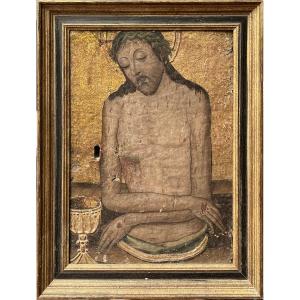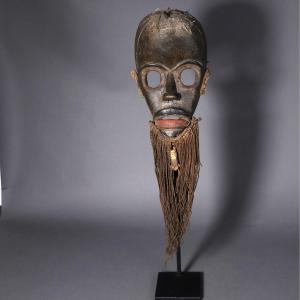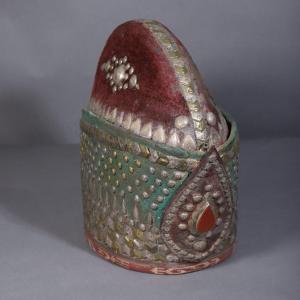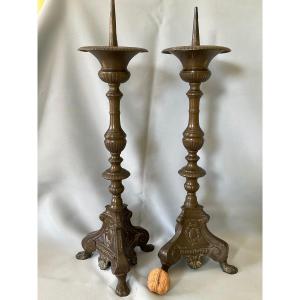He is represented half-length in front of a parapet, his bare chest showing his gaping wound, his head surrounded by the crown of thorns falling on his shoulder, his eyes closed and his arms folded. Tempera, stucco and gilded background on panel. Punched ornamental patterns. At the bottom left a cavity corresponding to the keyhole of the tabernacle door. On the reverse right the studded metal lock.
Size: 36.1 x 43.5 cm.
Some gaps, notably on the right arm; accidents and restorations.
On the origins in Venice, Bohemia and Siena, from the 14th century of the Christ of Piety or Imago Pietatis taken from a Byzantine motif, and its meanings in medieval devotion as Lord of mercy, we can refer to the study by Hans Belting, in The Image and its public in the Middle Ages, Ch. I.
The portrait of a dead God (L'Imago Pietatis), pp.35-48 (Gérard Montfort 1998). Here the unusual presence of the chalice in semi-relief collecting the blood of Christ on an isolated panel, and not in the form of a diptych or triptych, indicates its primary function in the liturgical furniture of the tabernacle door housing the ciborium.


































 Le Magazine de PROANTIC
Le Magazine de PROANTIC TRÉSORS Magazine
TRÉSORS Magazine Rivista Artiquariato
Rivista Artiquariato